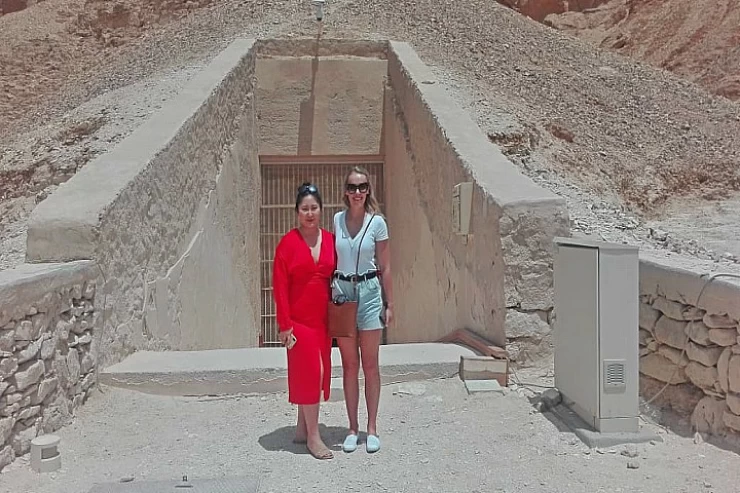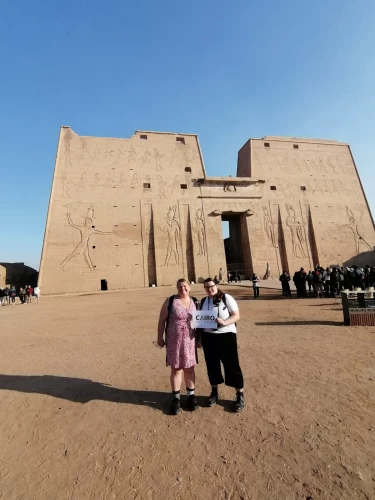Our staff will greet you in the foyer of your Aswan hotel after you are driven from Aswan to Luxor in an air-conditioned car. The Luxor Temple, once known as Ipt Reset, or the Sanctuary of the South, will be our first stop.
The splendor of New Kingdom architecture is represented by the beautiful temple built by Amenhotep III on the banks of the Nile in the city now known as Luxor. This pharaoh was not satisfied with his two additions to the Karnak Temple; he wanted to build a special temple to draw closer to the god Amun-Ra, the god of the empire, to boast of his works, and to record his divine origins on its walls.
You will then be transferred to one of the most important ancient Pharaonic cemeteries in Luxor Governorate, the Dra Abu al-Naga Cemetery. This cemetery is considered a sea beneath which lie the tombs of hundreds of Pharaonic leaders and dignitaries, beginning with the 17th Dynasty. It is located just a few meters from the tombs of the Valley of the Kings and Queens on the West Bank of Luxor Governorate.
Eat an excellent meal to give you energy for the drive to Habu. During Ramses III's conquests, he witnessed temples in ancient Syria, which inspired the architecture of Habu. On a 10-acre plot of land, it is 400 meters long and 200 meters broad. With a height of almost 17.7 meters, he clarified, the Temple of Habu is among the biggest and most significant fortified temples in ancient Egypt.
It features two walls, one internal and the other external, the latter of which has a giant gate called the Magdala. The walls of the temple contain numerous drawings that tell the stories of King Ramses III's wars, the military campaigns he led from Egypt, and the enemies he defeated. The colors of the city are still present on the columns, walls, and ceilings, despite the passage of thousands of years since its construction.
See the two statues of Memnon and prepare to be transported back to Aswan.





















